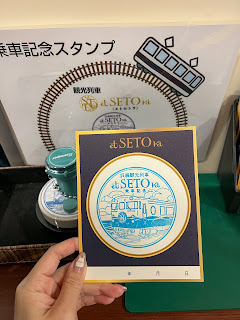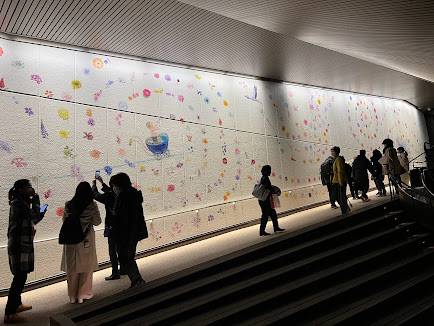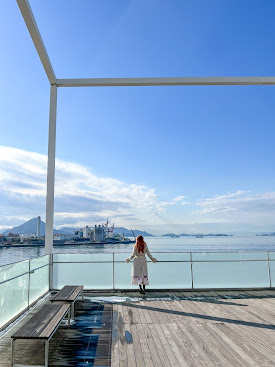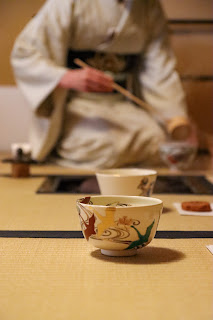When Hiroshima is named as a travel destination, most people think of the big red torii gate of Itsukushima shrine and the atomic bomb dome. And there is no doubt that these UNESCO world heritage sites are worth visiting. If you don’t have a lot of time to spare in your itinerary, aka you’ve only got 1-2 days, then here are the spots you must visit.
In part 2 of these series, I’ll dive deep into the less well-known spots with lots of hidden gems (and I don’t throw around this term lightly), place where you’ll get a real feel of the history, culture, people and get a calming recharge plus time away from the bustling cities.
Where is Setouchi?
Setouchi region covers the prefectures surrounding Seto Inland Sea. It spans across Honshu, Shikoku and Kyushu, covering prefectures such as Hiroshima, Yamaguchi, Okayama, Hyogo, Osaka, Kagawa, Ehime, Fukuoka and Oita.
Throughout this series, you’ll notice that the ocean and what it offers is an essential part of life here. Other than beautiful seaside towns, the seafood is also delicious here, with oysters and saltwater eels being the most famous exports from Hiroshima.
Onomichi 尾道 - cats and temples on a retro seaside city
Before we dive into Hiroshima city, let me introduce you to Onomichi. This is the 5th largest city in Hiroshima prefecture by population and was historically a place where wealth gathered due to the trade of rice. Because there were many well-off businessmen, they gave back to the community by building and donating to many temples. At its peak, there were over 80 shrines and temples throughout town. Nowadays the most visited one is Senkoji Temple, founded in the 9th century, which sits at a hilltop with a panoramic view of the city and Inland Sea.
All aboard the tourism train etSETOra
To get to Onomichi, I highly recommend the tourism train called “etSETOra”. It’s a leisurely 3hr ride with champagne, wine, and beer served along with sweets and a fantastic view of the Seto Inland Sea. It starts at Hiroshima JR station and takes you right to Onomichi Station on the local train line along the coast. The train features large windows and with some seats facing the window for a better viewing experience. If you are a fan of collecting stamps, there’s also one near the train bar.
*Seats on etSETOra is by advanced reservation only, you can do that by enquiring with a Japan travel agency
Where to stay in Onomichi
If you plan on staying overnight in Onomichi, check out the newly built Hotel Beacon Onomichi. It’s attached to the station, and the types of rooms are very well-designed. My favorite one is the room that comes with bike racks, perfect for the cycling enthusiast. There are also rooms with Japanese traditional designs and bunkbed rooms, too. Within the hotel is a restaurant which serves healthy food local to the region.
Senkoji Temple and a panoramic view up the cable car
Before taking the ropeway up to Senkoji temple, make sure you download this map first for the cat trail. There are many cats in Senkoji area and cute little cafes along the way. Take the ropeway up, check out the PEAK observation deck where you can see the train line, then take a leisurely hike down so you can take a closer look at all the different temples and look for cute cats along the way.
Travel back in time at the shotengai of Onomichi
At the bottom of the ropeway, you’ll cross the train line and get to the shotengai or shopping street area. It’s charming with lots of retro shops that take you back in time. There’s even a sento themed restaurant and a kissaten (old-school Japanese café). I’d recommend to give yourself lots of time to stroll down here and browse all the interesting shops here.
From Onomichi, we took a ferry over to Setoda Island, but that is a location I’ll dive into in part 2.
Fukuyama City 福山市 - finding the only Japanese castle right next to a Shinkansen stop
Just 20 minutes east on the train from Onomichi is the second largest city in Hiroshima. It’s a major transportation hub with 4 types of Shinkansen trains stopping there (Nozomi, Hikari, Kyuushu Shinkansen and Kodama). But perhaps the coolest thing is, it also has the only Japanese castle that is right next to a Shinkansen station. On top of that, Fukuyama Castle is also the only castle in Japan built with iron plates, giving it a dual color look. It was built over 400 years ago in 1622, and the original castle stood until heavy bombings in WWII destroyed most of the building. It was rebuilt in 1966 to celebrate recovery from WWII, and the inside is a museum with lots of cool interactive activities to simulate life in the past.
Hiroshima City 広島市
3 Quick facts about Hiroshima:
- There are three UNESCO World Heritage Sites in Hiroshima - the Atomic Bomb Dome, Miyajima Island, and Itsukushima Shrine
- Most famous dish in Hiroshima is Okonomiyaki
- The population of Hiroshima is just over 1 million, about the same number of foreign tourists visiting each year
Hiroshima Peace Memorial Park
On August 6th, 1945, the first atomic bomb was dropped onto the city of Hiroshima. The 15,000 tons of TNT force from the bomb devastated the city and killed 140,000. Because the bomb detonated 240m above the city, some structures such as the Atomic Bomb dome (formerly the Hiroshima Prefectural Industrial Promotion Hall) kept its structure. After the war, Hiroshima Peace Memorial Park was established around the dome. When visiting Hiroshima Peace Memorial Park, here are a few key spots you should visit:
- A-Bomb Dome
- Children’s Peace Monument
- Rest House (You can enter the building, there was one survivor who was in the basement which is preserved as the day it was bombed)
- Hiroshima Peace Memorial Museum
- Peace Flame
It was definitely difficult to visit the Memorial Park as the heavy sadness of history echoed through each location we went to. However, I do think it’s essential as it is an important part of Hiroshima’s history as a city. Despite the devastation, power was restored the very next day and water pumps repaired within 4 days. Trams were up and running on the 3rd day post-bombing and rebuilding of the buildings that were flattened was completed within 3-4 years.
Finding peace and looking towards the future with Orizuru Tower
A place to visit after the memorial park is Orizuru Tower. It brings a lot of hope for the future and is a nice way to continue learning about Hiroshima. At the very top is a rooftop bar with a view of the river and A-bomb dome below. You can fold paper cranes, a symbol of peace, and drop it down the side of Orizuru Tower which now has a collection of over 300,000 paper cranes from visitors. The outer wall of this tower has a different mural by local artists on each floor, all symbolizing peace and hope. You can walk down the stairs or take the cute slide down each floor.
Hiroshima Naka Incineration Plant, an unexpected place for a gorgeous view
One place that really took me by surprise is the Hiroshima Naka Incineration Plant. An incineration plan is a place where treatment of waste is done. Now before you scroll past, it’s not what you think. We didn’t go look at piles of trash. We were greeted with a gorgeous floor to ceiling view of the ocean. Architecture enthusiasts have known about this place long before it became famous from the movie “Drive My Car”. It was hard to not appreciate all the symmetry in the building’s design.
All about food: Oysters and Okonomiyaki
Hiroshima is the largest producer of oysters in Japan, suppling over two-thirds of Japan’s oysters. There are 5 different ways you can eat these oysters in Hiroshima: raw, fried in tempura batter, grilled, steamed, and served in a miso hotpot. An affordable restaurant that serves these delicious oysters is Oyster bar Mabui. It’s located in Fukuromachi of Hiroshima city, and the restaurant is a cozy 2-floor space featuring a long bar. You can opt for the all-you-can-drink menu which has both Japanese and western beverages. For those who don’t eat oysters, this restaurant has other options such as chicken and vegetarian dishes.
Another dish Hiroshima is famous for is their Okonomiyaki. Different from the Osaka style Okonomiyaki, the Hiroshima style is packed with noodles and made in pancake-like layers. You’ll usually find within Okonomiyaki, pork and mayonnaise, which not everyone is keen on eating. That’s why Okosta Okonomiyaki right by Hiroshima station is the perfect choice. It’s a restaurant where you make your Okonomiyaki yourself while guided by English-speaking staff. You can make a reservation and pick vegetarian and halal options, making this very accessible and friendly to the international crowd.
Where to stay in Hiroshima: Hilton
There are so many options for hotels in Hiroshima, but only recently built and selected as a host venue for the G7 meetings is Hilton Hiroshima. This gorgeous hotel features a lot of colors and patterns that represent Hiroshima and Seto Inland Sea. From the blue-wave pattern carpets to the pool with tori-gate-like reflections, staying at the Hilton will not only give you comfort but also the warmth and beauty of Setouchi region.
Miyajima 宮島
The world is very familiar with Miyajima and its large red tori gate in the sea. It recently went under 3 years of construction and completed in December of 2022. Since this is a well-traveled location, and information is readily available in English online, I won’t go in-depth with facts, but instead will give you some key points of how to make your experience better.
- Ferry: take the JR train to Miyajimaguchi Station (26min) then take a short ferry across. It’s the most efficient way to get on the island.
- Low tide, high tide: The tide changes 4 times a day. I’d recommend getting onto the island by 9:30am to see low tide, and experience high tide around noon. Tide timings is listed at the entrance of Itsukushima shrine
- Take a rickshaw: EBISUYA is a well-known rickshaw company which operates all around Japan. You can book a 1 block tour (12mins) from the ferry pier to the shrine starting at ¥4,000 (1pax) or ¥5,000 (2pax). Add ¥1,000 for an English guide. https://ebisuya.com/en/service/index.html
- Temple: Other than Itsukushima shrine, there’s also a temple called Daishoin. It features many buddha statues on a hill and has a tea house offering tea ceremonies if you enquire in advance
- Shopping for souvenir: Miyajima Omotesando Shotengai is a stretch of small restaurants and shops. Leave yourself plenty of time here as there is so much to browse! Make sure you try the Momiji manju which is a famous bean-filled pastry of Miyajima.
Now you have a basic understanding of the most famous experiences Hiroshima have to offer. If you are still looking for more, or a different type of experience, continue to part 2.
Follow me on instagram @ariel.land for more Japan insights







































No comments:
Post a Comment